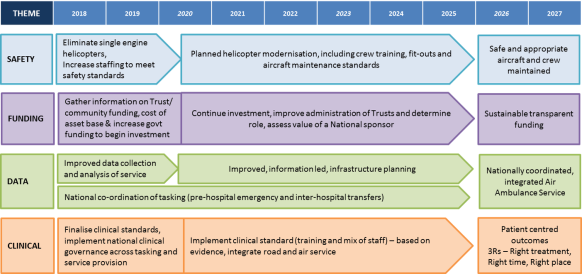
Auckland HEMS Prehospital and Retrieval Medicine Practitioners Wanted



Are you interested in working with Auckland HEMS? Click HERE for details…

Auckland HEMS dealing with unsuccessful job applicants
The authors conclude to have a low threshold for chest tube insertion based on CXR however, not shockingly a CT chest will provide more information. This study certainly doesn’t support withholding a chest drain if needle decompression is performed in the field. There was a nice suggesting by another surgeon who commented they leave all the needles in place during CT scan to see if it actually reached the pleural cavity. For the stable patient that doesn’t need immediate intervention, this is probably sound advice. Wait for the CT then make decision based on clinical and radiographic data.
There should probably be further study on this topic but for now, this is all we have! Here’s the abstract below.
Is routine tube thoracostomy necessary after prehospital needle decompression for tension pneumothorax? KM Dominguez et al. Am J Surg 2013; 205(3): 329-332
Thoracic needle decompression is lifesaving in tension pneumothorax. However, performance of subsequent tube thoracostomy is questioned. The needle may not enter the chest, or the diagnosis may be wrong. The aim of this study was to test the hypothesis that routine tubethoracostomy is not required.
A prospective 2-year study of patients aged ≥18 years with thoracic trauma was conducted at a level 1 trauma center.
Forty-one patients with chest trauma, 12 penetrating and 29 blunt, had 47 needled hemithoraces for evaluation; 85% of hemithoraces required tube thoracostomy after needle decompression of the chest (34 of 41 patients [83%]).
Patients undergoing needle decompression who do not require placement of thoracostomy for clinical indications may be assessed using chest radiography, but thoracic computed tomography is more accurate. Air or blood on chest radiography or computed tomography of the chest is an indication for tube thoracostomy.
A recent study (not sure if it’s been published yet but will be soon) studied the ability of radiologists to accurately identify abnormalities on a CT scan. We’re talking board-certified, full fledged radiologists! I can’t take credit for coming across this paper – check out @TechnicalSkillz, ED physician in Toronto who tweeted the link. He has a real interest in cognitive biases and medical decision making. Anyways…I digress.
This image was presented to radiologists after they were told to look for abnormalities including lung nodules. Do you see the abnormality? Don’t worry…you don’t need to be an expert at reading CTs…it should be obvious!
24 radiologists examined this image and 20 were not able to identify the gorilla in the upper right corner! 20/24 didn’t see it! that’s unbelievable. They’re so focused on looking for other things that they glazed right over it. Using eye tracking technology, the reserachers were able to show that impressively 12 looked directly at the gorilla but still they didn’t see it!
This concept of inattentional blindness (or perceptual blindness) is
failure to notice an unexpected stimulus that is in one’s eyesight when other attention demanding tasks are being performed (Wikipedia)
I think this happens not infrequently in pre-hospital medicine and the emergency department. How many times does the patient turn out to have an entirely different presentation from what we hear over the radio call out or what’s written on the triage note. Right from the beginning we’re biased by the what we hear…it may be the local clinic calls with “a 73yr old with pneumonia”. Maybe there’s some shortness of breath to reaffirm this diagnosis but just as the radiologists were looking for nodules, we might be looking for pneumonia and miss the pneumothorax because we didn’t find out the patient fell earlier today. It could have been obvious if we just auscultated the lungs more closely but because we were thinking about crackles, we didn’t anticipate there would be absent breath sounds.
I think we’re especially vulnerable in the pre-hospital setting to inattentional blindness. We receive limited and often wrong information. Add that to time pressures to reduce scene times and it’s very easy to succumb to such cognitive biases. We must implement cognitive checks to ensure that diagnoses are not missed. Standardized approaches to common presentations can help to ensure that critical diagnoses are considered regardless of the presentation. Efforts to ensure strong team communication will also enhance diagnostic abilities – maybe someone else on your team saw something you didn’t but failed to mention it.
Awareness of pitfalls around diagnostic errors must extend to pre-hospital clinicians. This will help us identify those gorillas! Check out some of the work by Pat Croskerry who’s a world leader in medical decision making, cognitive biases and diagnostic error (plus he’s Canadian, so he must be great!). Please note, the author of this post is Canadian which may be the reason for this conflict of interest!